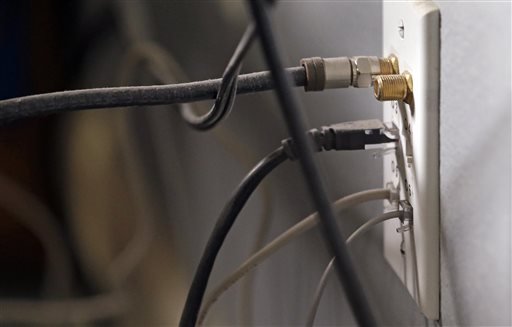The State Broadband Office is asking the public to open the Federal Communications Commission online map of broadband internet service and check the map for inaccuracies.
Arkansans opening the map can enter their or any other address and see a list of available suppliers of high-speed internet service — if any. The map should show the speed of the available service options in megabits per second.
The map will show gaps in high-speed internet service, and the federal Department of Commerce will use the map to decide how much infrastructure money to send to each state for broadband expansion, said Glen Howie, state broadband director. The taxpayer money comes from a recently passed infrastructure bill, he said.
“The best analysts’ estimates we have say Arkansas should get anywhere from $600 million to $1.3 billion,” Howie said Monday.
Federal Communications Commission map showing broadband access:
• broadbandmap.fcc.gov/home
State webpage explaining the process, with video:
• broadband.arkansas.gov/verify/
Federal site with more information and video:
• fcc.gov/BroadbandData
The deadline for challenges to be filed is Friday.
Pulaski County officials asked residents Monday to follow three steps:
• Visit the broadband map website and type in your address.
• Verify your address. If your address is incorrect or missing, click the “location challenge” link and fill out the form notifying the FCC.
• Validate your services under the “availability challenge.” If the information is incorrect and you are unable to access the speeds or services listed, click the “Availability Challenge” link and complete the form to notify the FCC.
The more accurate the communications commission map is, the more the federal taxpayer money will go to areas with real needs, Howie said.
“We need to try and get as many people in the state as possible to check the FCC’s new broadband map and challenge any inaccuracies,” said Matt Twyford, director of community development for the Arkansas Economic Development Commission, in a statement.
An estimated 269,000 locations — homes, businesses and public buildings — “are unserved or underserved,” Howie said.
“This is the first time to my knowledge the FCC has produced a map this detailed,” he said.
Previous communication commission maps of internet connections showed no details below broad areas such as U.S. Census tracts, which usually include populations of 1,200 to 8,000 people.
The communications commission designed the new map to allow people with poor or nonexistent internet service to access it from smartphones or in places with internet such as libraries and businesses, according to the federal agency’s website. Any resident who finds an inaccuracy on the list given for an address, such as the list showing an option unavailable for their address or not showing one that is available, can challenge the entry by clicking a link on the map.
“The number of residents that challenge the map will impact the funding the state will receive for infrastructure improvements in the next round of broadband funding, so it is especially important that we try to get the word out to as many people as possible — particularly those who are underserved,” Twyford’s statement says.
Both the U.S. and state have pages on their websites with more information. These websites also include “how-to” videos on using the map.
The communications commission drew up the map from the self-reporting of internet service providers. These providers must report where they offer service on a location-by-location basis. The check being conducted on the map by the public is designed to verify or refute where and what kind of service is available, according to the communications commission.
Information for this article was contributed by Paige Eichkorn of the Arkansas Democrat-Gazette.

